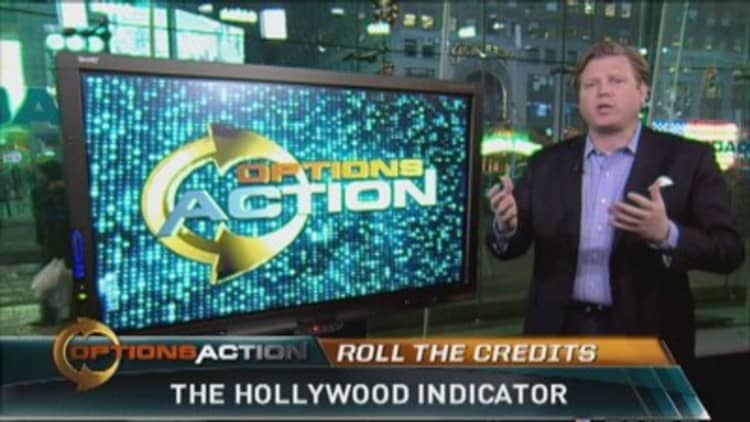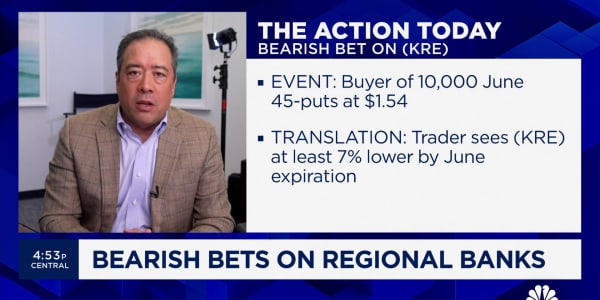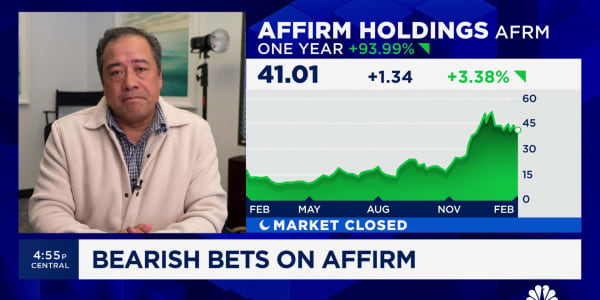
Could the success of "The Wolf of Wall Street" signal that the market is near a top?
Carter Worth, chief market technician at Oppenheimer, argues that the Oscar-nominated movie should indeed give bulls pause. After all, he said, interest in the film shows that interest in the market has gone mainstream—an observation bolstered by measures of participation in the stock market.
"When mass media or broad media picks up on something, typically that thing is reaching an end stage," Worth said.
For him, looking at movies is a modern-day version of the classic magazine cover indicator, which holds that the market tends to do the opposite of what a cover states about it. For instance, a technical analyst who believes in the magazine cover indicator would take a bear on the cover of Forbes as a bullish sign for equities.
(Read more: An interview with the real 'Wolf of Wall Street')
Today, with more eyes on films than on magazines, what might be called the "Hollywood indicator" could prove to be a better tell.
Worth points out that the track record for stocks around the release of a major movie about Wall Street has not been good. In 1987, the market crashed suddenly in October, two months before the release of "Wall Street." In 2000, "Boiler Room" was released as the market was peaking.
The most damning piece of evidence may be the timing of the first "The Wolf of Wall Street." An otherwise unrelated film by the same name, it was released in February 1929 (and was produced by Paramount, which distributed the 2013 film)—months before the horrific crash of that year.
"There is some rhythm here, some rhyme," Worth said.
(Read more: Strippers, dwarfs & coke: The real Wall Street—Commentary)
But beyond the cinematic parallels, there is evidence to suggest that retail investors—whose actions are often taken as a contrary indicator on the direction of stocks—are starting to get back in the market in a meaningful way.
Margin debt, an indication of investor interest, is at record levels. And retail trading volume is also jumping.
"Retail is showing a resurgence in early 2014, as trading outperformed seasonal expectations in both December and January to date, leverage or margin debt is increasing, and net new asset flows of the online brokers are robust," said Rich Repetto, an analyst who covers online brokers and execution venues for Sandler O'Neill.
In addition, U.S. household exposure to stocks is at its highest level since just before the financial crisis, according to the Federal Reserve. It is worth nothing, however, that this is attributable to the strength of a rising market rather than to massive household purchases.
Indeed, despite the reemergence of the retail investor, market experts say we have yet to reach any type of speculative frenzy.
The high margin debt is simply a function of stock's record run, according to Michael Khouw of Dash Financial.
"It is important to take into context the aggregate deposits in investors' accounts, which is also at an all-time high," he said. "If all marginable accounts had no excess buying power, that's when the bell tolls, and it isn't … yet."
In other words, while the aggregate level of margin debt has risen, investors aren't taking on the maximum amount of margin debt, indicating less exuberance than the headline margin debt number would seem to imply.
So to Worth's point, perhaps Main Street's interest in Wall Street topics is rising with excitement about (and retail investment in) the stock market. But that still doesn't necessarily mean that the wolf is at the door.
—By CNBC's Alex Rosenberg. Follow him on Twitter: @CNBCAlex.
Follow "Options Action" on Twitter: @CNBCOptions.






